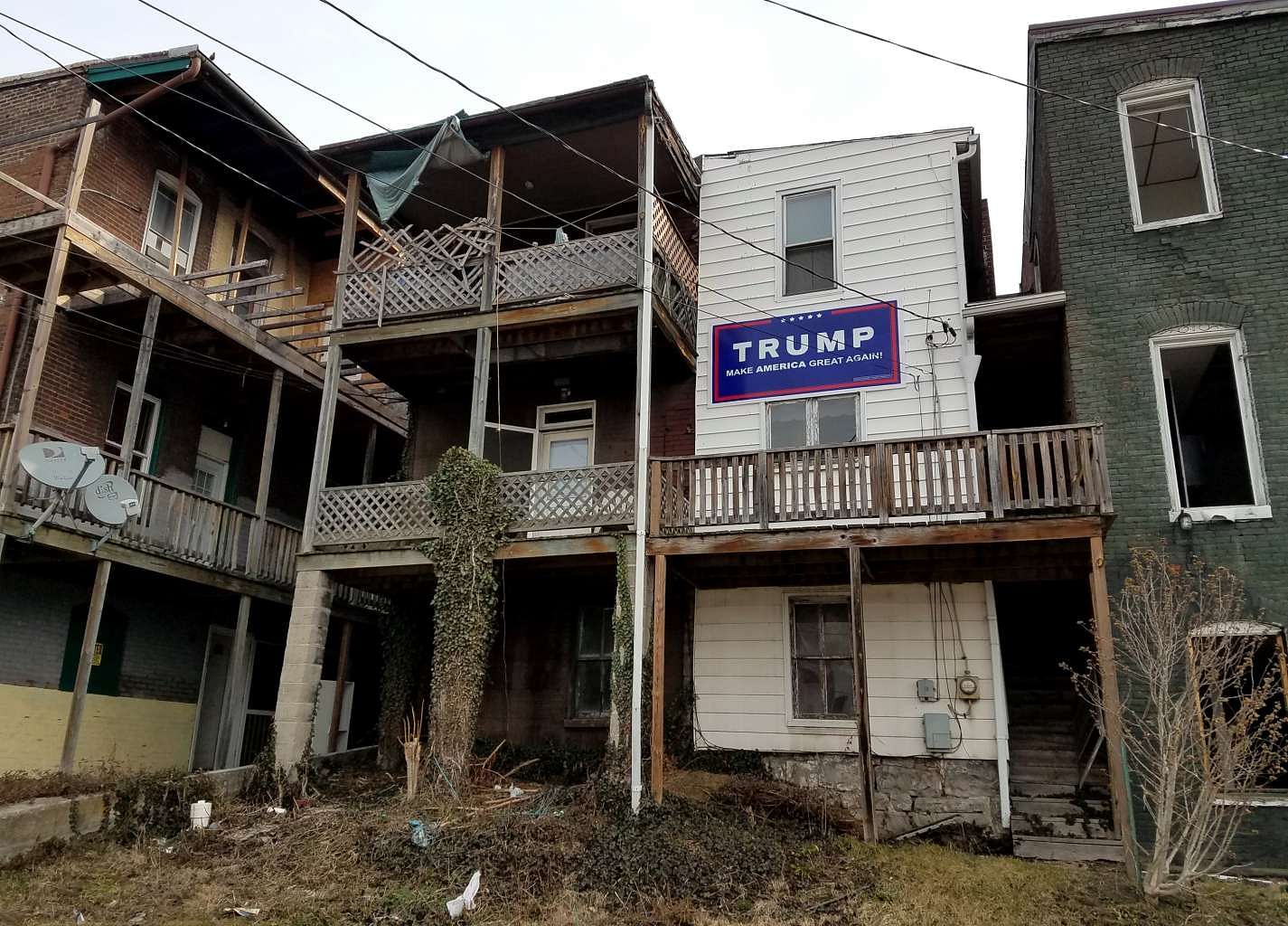Where gangs, guns and drugs rule
CHICAGO: Daylight murder of a toddler sends A chill up residents' SPINES
On a cold but sunny afternoon on Valentine's Day, two-year-old Lavontay White Jr was sitting in the back seat of a car driven by his pregnant 20-year-old aunt. She and a young man next to her were singing along to rap music, live-streaming themselves on Facebook.
Abruptly, a series of gunshots erupted like sharp hammer blows.
The mobile phone tumbled, the woman screamed. She stumbled out of the car with phone in hand, and into a nearby house gasping: "Call 911! They killed him... I have a bullet in my stomach."
Little Lavontay had taken a bullet to his head. Mr Lazarec Collins, 26, the apparent target of a gang hit, had also been shot. Both died.
The video turned the stomachs of Mr Clifton "Booney" McFowler, 56, and two friends as they viewed it a few hours later, a few blocks away. All knew the woman, who miraculously survived, along with her baby.
One of the men cursed as he ground his cigarette out under his boot. "She's just 20, she's a baby," he told The Straits Times. "And she's pregnant. See, that's another thing that's so messed up around here - you have babies having babies."
Even by the usual measure of violence in Chicago, the vibrant heart of America's Midwest where gangsters like Al Capone once ruled and raked the streets with machine gunfire, the nonchalant murder of a toddler in broad daylight sent a chill up residents' spines.
It also put a loud punctuation mark on US President Donald Trump's inauguration speech just three weeks earlier in which he pledged to end America's "carnage" of inner-city drugs and violence, and dreary, small, post-manufacturing, post-mining towns.
Neighbourhoods like Lawndale, where Lavontay was killed, Garfield Park and Austin, are just a 20-minute ride down Interstate 290 from the bustling business district and bluesy nightlife of downtown Chicago of soaring high-rises - and, yes, a Trump Tower.
There were 762 homicides in Chicago last year - nearly 300 more than in 2015, and more than in New York and Los Angeles combined. This year, January ended with 51 homicides, the most in almost two decades.
Despite all the blood spilt, Chicago is not even the murder capital of the US. On a per capita basis, New Orleans, St Louis, Detroit, Baltimore and Newark all had higher homicide rates. In fact, the US' big cities, more often than not, have poorer sides that breed deadly crime.
Chicago's violence is overwhelmingly centred on just five out of 22 police districts on the sprawling city's west and south sides, largely home to lower-income African Americans and Latinos.
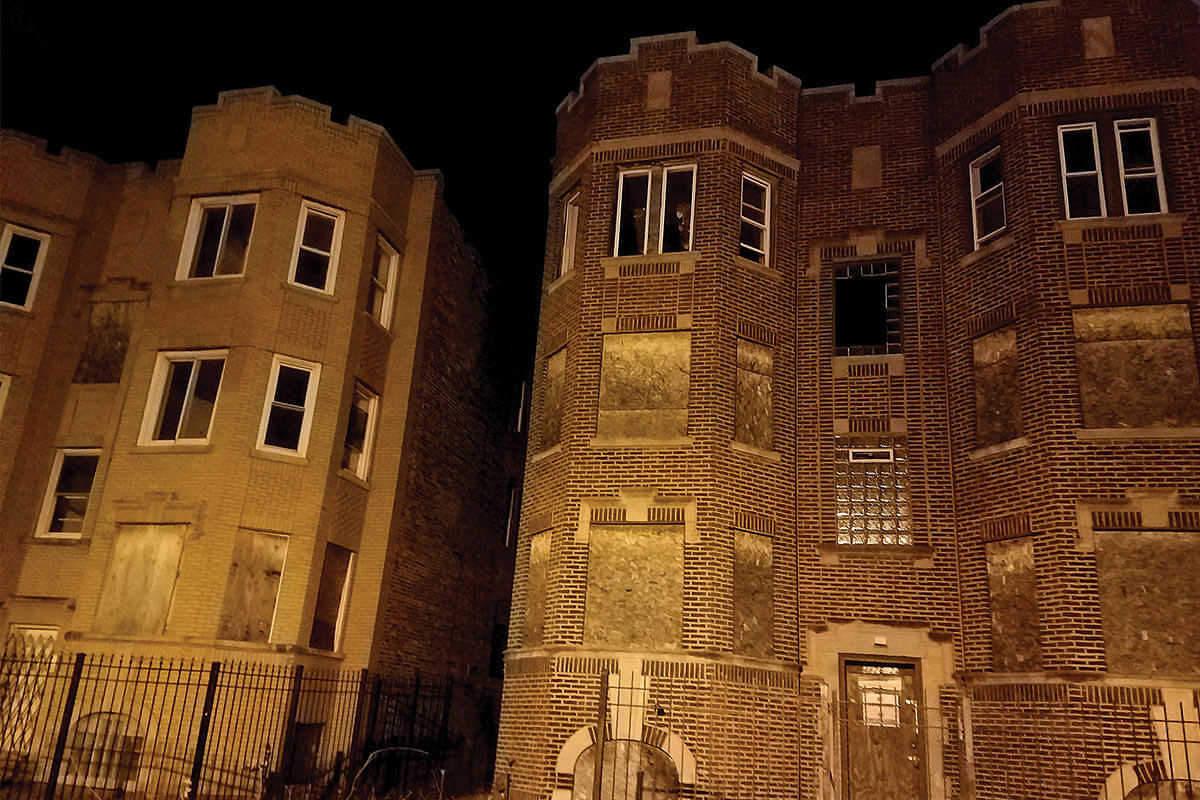
Austin, in the west and more than 85 per cent black, is in one of those five districts. Stray cats prowl its overgrown vacant lots littered with tiny discarded plastic sachets used to dispense crack cocaine or heroin, giving Interstate 290 its nickname - "Heroin Highway". Here, groups loosely called gangs but really more like cliques, rule over row after row of ramshackle houses.
"Three or four guys form a clique and within a one-block radius, they fight each other even over half a block," said Mr McFowler, himself a reformed criminal.
He founded a gang but spent 27 years in jail for killing a man in a gunfight over a turf and drugs dispute.
After his release in 2011, Mr McFowler and a team of other former gang leaders, who had also done time, joined an Austin non-governmental organisation, Build, to reach out and counsel youth to keep them off the streets and out of gang activity.
As Mr McFowler and his friends were looking at the video of the attack that left tiny Lavontay dead, a young man was killed at a liquor store a few streets away. "A guy in a black BMW drove by and shot him," a police officer on the scene said. The body had been removed. Under the yellow street lamps, a yellow police tape around the scene fluttered in the breeze.
A couple of days before, in another neighbourhood nearby, a bullet had lodged near the brainstem of 11-year-old Takiya Holmes after she was shot while riding in a minivan with her mother. That same day, 12-year-old Kanari Gentry Bowers was shot in the head as she was playing basketball. Both bullets were meant for other people. Takiya died in hospital in her mother's arms on Valentine's Day. The next day, Kanari died in hospital.
The police picked up a 19-year-old on suspicion of Takiya's killing. Shooters, like their victims, are getting younger and younger, Mr Anthony Guglielmi, a spokesman for the Chicago Police Department, told The Straits Times in a phone interview. And the shooters of today are often the victims of tomorrow or vice versa, he said.
The easy availability of guns is part of the problem. For about US$150 (S$213), you can buy a gun on the street, the Build team members said.
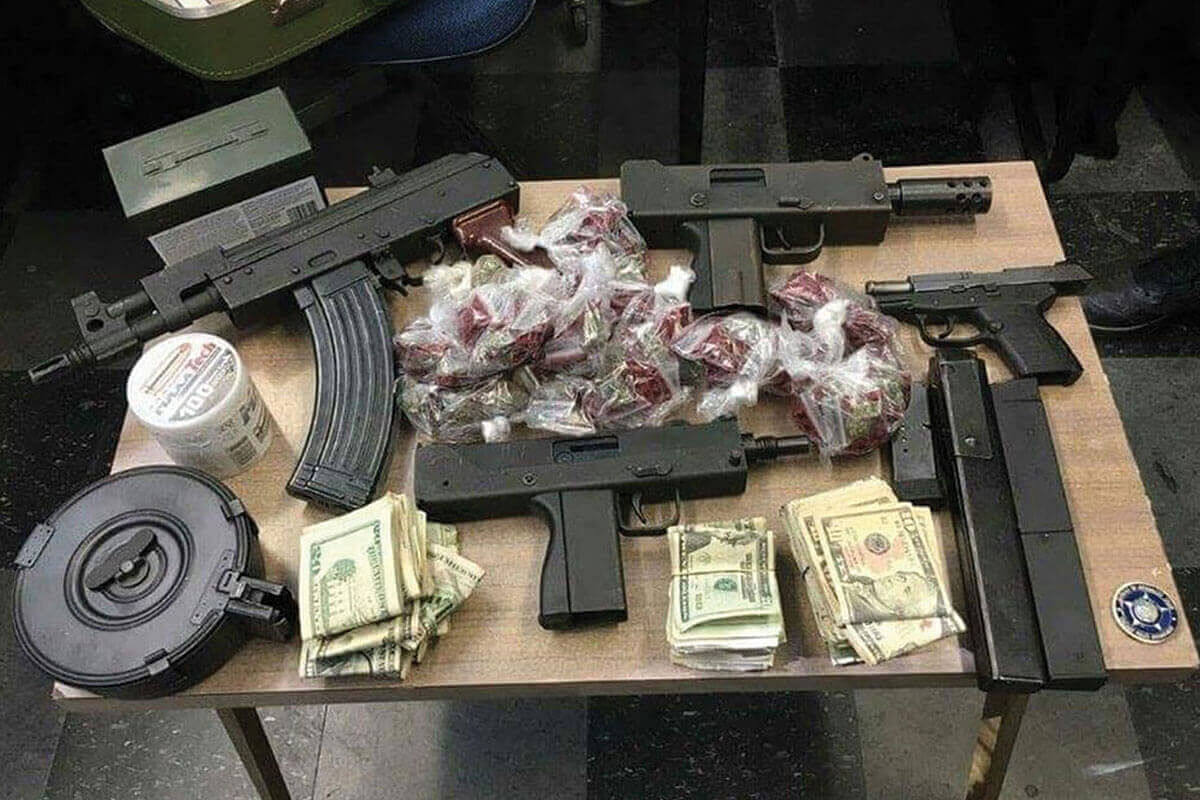
Nearly half of those arrested for murder last year had prior gun arrests in their backgrounds, the police spokesman said. In fact, 80 per cent of victims last year had prior criminal histories and had been identified by the department as victims or suspects in gun violence.
But what preys on the minds of the communities here are the random deaths by stray bullets.
"The (kids) can't even come outside and play on their block, let alone go to a playground, because there's so much going on in our community," Austin resident David Goins, 58, told The Straits Times in one of a series of interviews on the streets that same night. "Just the other day, two girls were shot. One was playing basketball. How do you answer that?" he said, shaking his head, in a reference to Kanari.
In a grim assessment of what admittedly is carnage, Mr McFowler said: "Kids here can't think beyond the next six months."
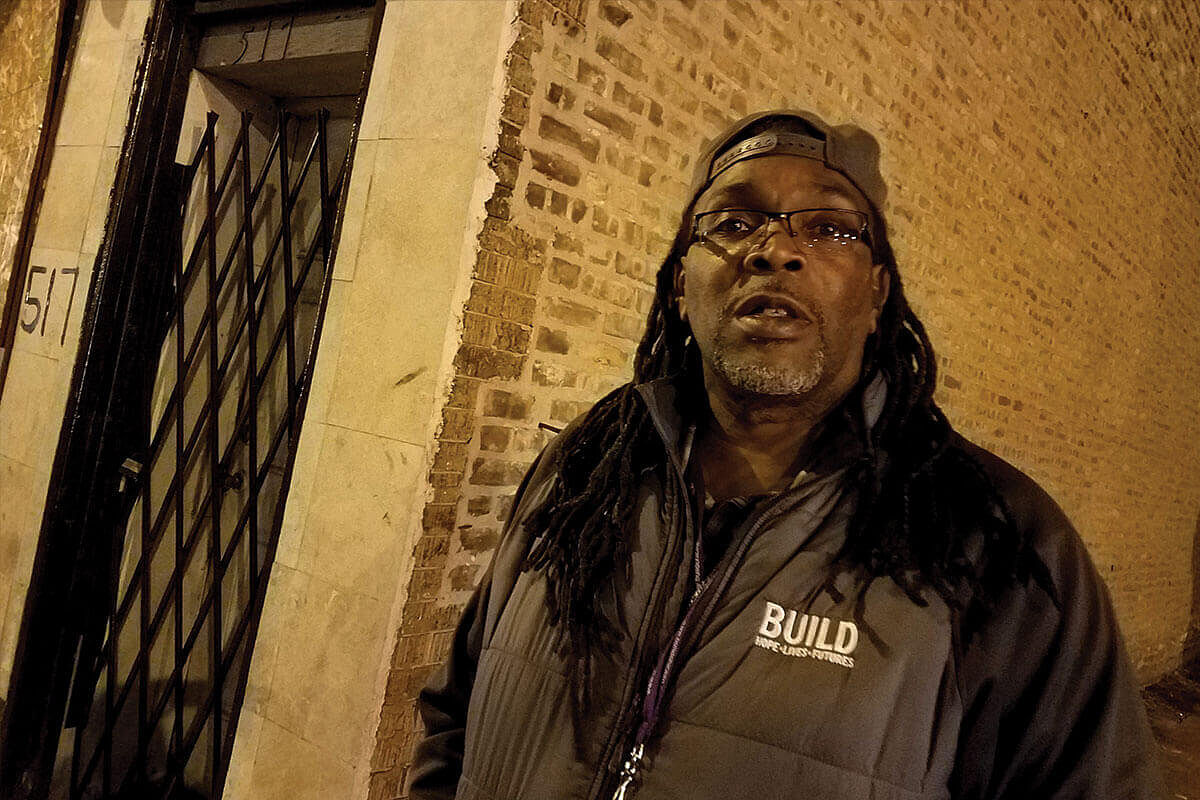
To him, the problem is deeply personal. Mr McFowler was not around for his own son who, at the age of 17, was also jailed for murder. That son is now 35 and still in prison.
Mr McFowler blames himself. "I was a bad dude and he was trying to live up to my name," he said. "He did tell me, just last month, that it wasn't my fault. But I missed all his life. I think that's what kind of motivates me to do what I do. I was a part of messing things up. I was a gang leader. But I don't want to be remembered as a gang leader," he said. "I want to leave a legacy as someone who fights to save the kids from gangs."
Getting to the root of Chicago's inner city violence
Chicago's soaring homicide rate is the result of a toxic mix of history, of economic, social and geographical segregation, of a breakdown in relations between minority communities and the police force, and the fact that here, as in most of the US, it is easy to obtain a gun.
At the root of all of the above, though, is the lack of economic opportunity in some enclaves.
While downtown Chicago, clustered on the shores of Lake Michigan, is the epitome of diversity and globalisation, sizeable chunks of the rest of the inner city have been left out. In the high-crime district of Austin, for example, the poverty level is 30.7 per cent, well above the citywide average of 20.9 per cent.
And there is one distinguishable feature - most of the population in the depressed districts are African American or Latino.
"The violent crime that pushes Chicago into the national headlines is largely located in the city's impoverished and transitional communities," Mr Pete Saunders, a consultant specialising in cities, wrote last year in an article in Forbes.
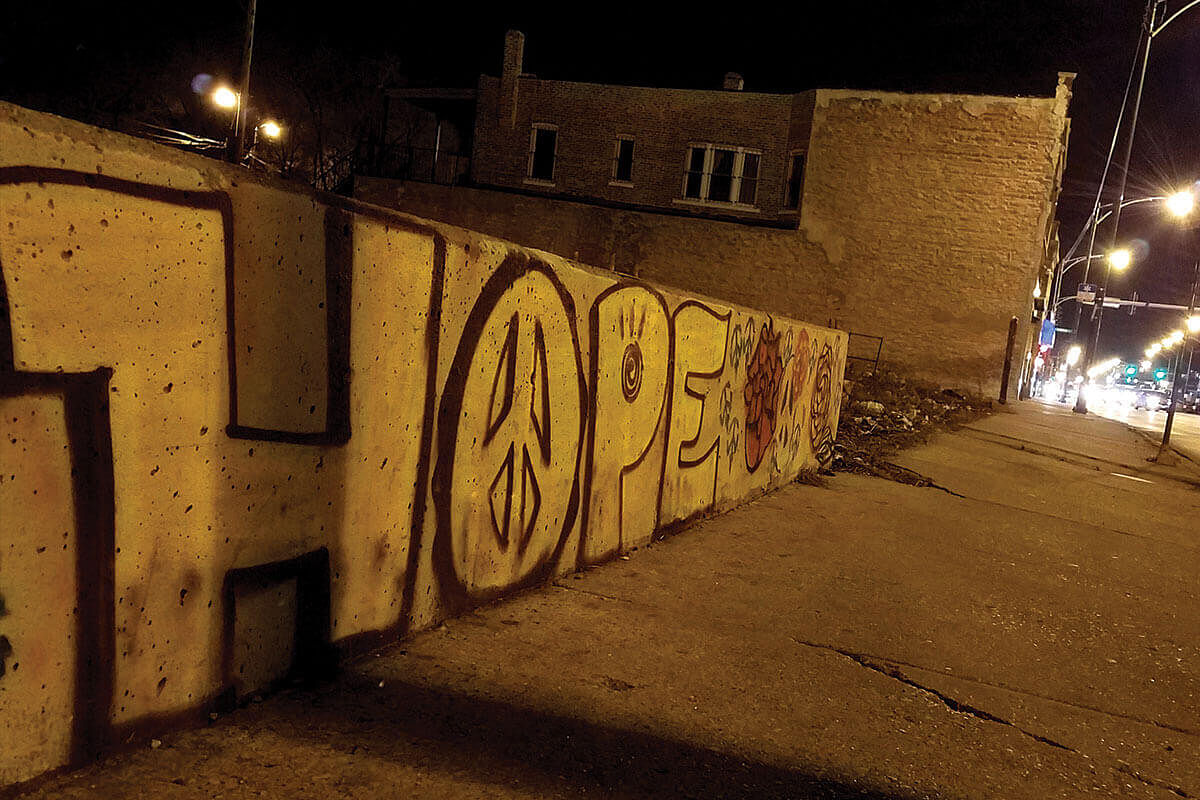
"In Chicago's case, diverse and wealthy areas appear to be clustering and growing safer, and resegregated, impoverished areas seem to be expanding - all at the same time."
Chicago Police Department spokesman Anthony Guglielmi, in a phone interview with The Straits Times, blamed a "broken down criminal justice system" that is too lenient with offenders, who often go on to commit crimes again.
"The challenge here is you have an emboldened criminal element that really feels no repercussions for engaging in those actions and if they don't engage in violence, they will not be able to deliver for the gang they work in," he said.
But on the ground in a district like Austin, which has one of the highest homicide rates in the city, the answer is not more policing and stiffer sentences. The Chicago Police Department has a hard job, many locals acknowledged in interviews with The Straits Times. But it has also been slammed by the Department of Justice which, in a report last month, described "a pattern or practice of using force, including deadly force, in violation of the... Constitution".
"I'm sure there some cops who are pretty cool," former gang member Max Cerda, now part of the non-governmental organisation Build, said in an interview at its office in Austin. Build intervenes to counsel youths in the community.
But the police sometimes seemed to lose their humanity and respect for people, and with that the trust of people in the community, Mr Cerda said.
The real answer, locals say, is economic opportunity.
At a townhall-style meeting on Feb 10, Mr Jaymal Green, a young social activist, drew wild applause when he told the MSNBC host that millions of dollars were being invested in downtown Chicago, but nothing in the African American districts.
"We walk past boarded-up schools, boarded-up houses, mental healthcare facilities shut down, and unemployment is the highest in Chicago," he said. So, before talking about violence and policing, "you have to talk about economics", he emphasised.
Few in the districts disagree. "It's what the kids wake up and see every day," said Mr McFowler.
"They don't see thriving businesses," he said. "The only people in the community they see having any kind of financial gain is the crooks and drug dealers, so quite naturally they are inspired by them."
At the heart of America's drug crisis
MARYLAND, WEST VIRGINIA: Escalation of opioid deaths is linked to economic decay
It was around late 2015 that police in Maryland noticed the resurgence of heroin.
"It came on hard and fast, like a hurricane - and we are still in the middle of it," said Cumberland Police Captain Greg Leake in an interview in his office on February 14.
As he spoke, his mobile phone buzzed constantly with updates on raids planned that night on illegal opioid suppliers.
The department has its hands full fighting a multi-headed target homing in on a ready market.
Maryland, next to the nation's capital, has seen a sharp increase in deaths due to drug overdoses - both of heroin and legal prescription opioids or painkillers.
While drug addiction is driven by a cocktail of factors, the correlation to economic decay is inescapable.
With a population of around six million, Maryland has lost 25,000 manufacturing jobs since 2007.
In his inaugural speech, Mr Trump referred to an "American carnage" not just of inner-city poverty, but a rural despair of rusted-out factories "like tombstones across the landscape" and "the crime and the gangs and the drugs that have stolen too many lives and robbed our country of so much unrealised potential".
Carnage is defined as the killing of a large number of people.
According to Maryland's Department of Health and Mental Hygiene, there were 918 fatal heroin overdoses from January to September 2016, double that of the previous year. During the same period, there were 738 fatal Fentanyl overdoses, four times more than the previous year. Fentanyl is a powerful and addictive prescription painkiller.
Neighbouring West Virginia, with a population of 1.8 million, lost 3,243 jobs between August 2015 and August 2016. Jobs from the coal industry made up 21 per cent of those jobs. The industry was once the state's largest employer - hence President Trump's mission to "bring back coal" and create "millions of jobs".
The opioid addiction crisis is coursing largely unseen to the casual eye, across rural America.
Nationwide, overdoses associated with prescription and illicit opioids killed 33,091 people in 2015 - four times as many as in 1999, and the number exceeded deaths by gun-related homicides for the first time.
Across the United States, an estimated 83,000 coal jobs were lost and hundreds of coal mines shuttered under the Barack Obama administration, which imposed expensive regulations through the Environmental Protection Agency.
In some small towns across America's mid-western post-manufacturing, post-mining rust belt, the only thriving businesses left are local pharmacies.
This came as the states were yet to fully recover from the 2007 sub-prime crisis, which saw hundreds of thousands of homes and jobs lost, hitting rural Americans especially hard.
As early as 2014, a paper in the American Journal of Public Health noted that opioid misuse was a "growing public problem in need of action and is concentrated in areas of US states with large rural populations such as Kentucky, West Virginia, Alaska, and Oklahoma".
"Economic stressors… may create vulnerability to drug use more generally," the paper said.
"Economic downturns have more adversely affected rural areas in the United States," it added. "Rural counties in particular have faced job sector and industry shifts… resulting in long-term economic deprivation, high rates of unemployment, and fewer opportunities for establishing a long-term career with potential for upward mobility."
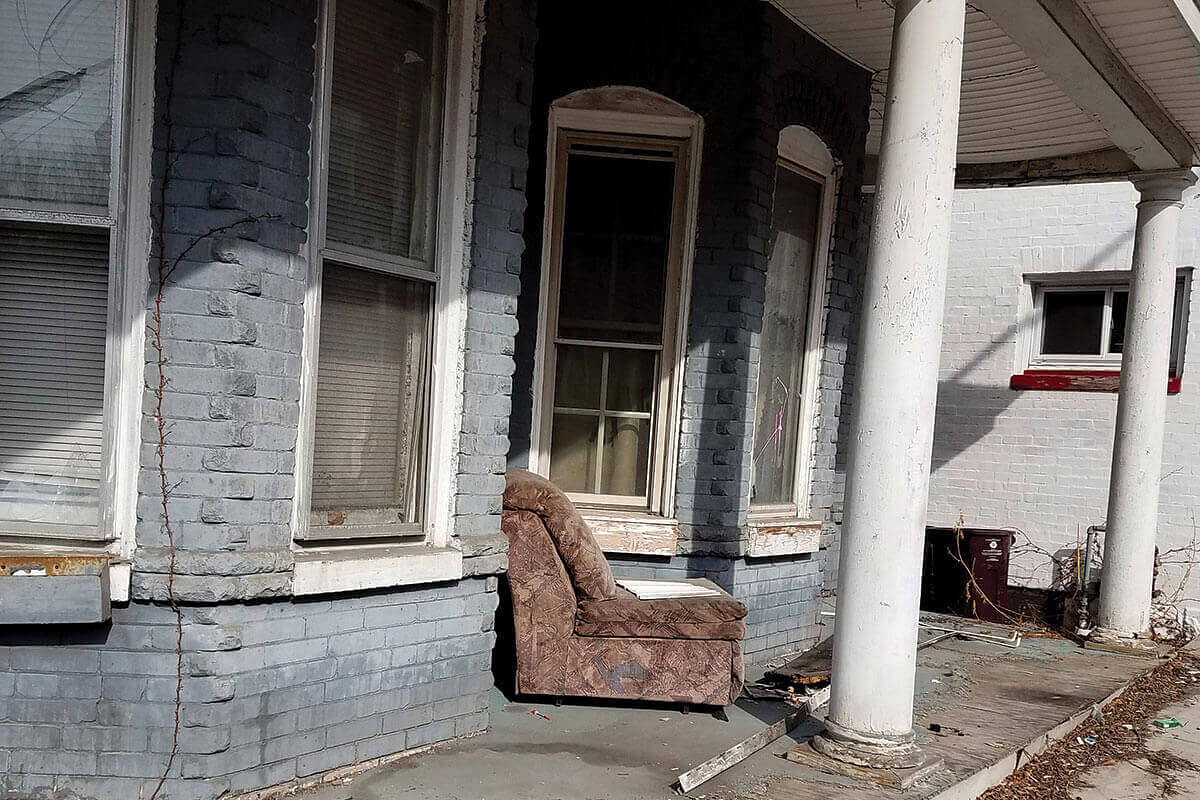
At the Alternative Drug and Alcohol Counselling (ADAC) in Hagerstown, Maryland - an hour's drive from Cumberland - Ms Deanna Bailey, 60, one of ADAC's most experienced counsellors, told The Straits Times: "I see (opioid addiction) happening in more and more areas of low income and little employment, both inner city and rural."
"It's boredom, you know," she said in an interview at the ADAC office, in a house across the road from a lake where Canada geese and a pair of white swans bobbed under a clear blue sky.
"What do you do if you have no money?" she said. "Opiates are painkillers; that means they kill all pain. So if I'm bored, or if I'm poor, and someone gives me a Percocet or offers me heroin, I can take it and to my surprise I feel great, no matter how downtrodden I am, no matter how lousy my situation is. And it becomes a magnet."
There are other factors too: A culture that demands relief from pain; doctors too liberal with prescriptions, and who are often evaluated on how much they can reduce their patients' pain; a pharmaceutical industry marketing painkillers; and in the case of heroin and other deadlier drugs, easy supply routes on America's freeway systems.
And while opioid addiction is egalitarian, its victims are mostly white middle-class, the counsellors and experts in Maryland and West Virginia told The Straits Times.
The devastation cannot be underestimated.
Ms Keisha Clopper, 27, one of the younger counsellors at ADAC, told The Straits Times she has lost more than 20 of her classmates - an estimated 15 per cent to 20 per cent - to opioid overdoses.
Separately, at one of Cumberland's methadone treatment centres for heroin addicts, 40-year-old Celesta Harris, a mother of six who spent years on opioids and then on heroin, and went to jail once for robbing a convenience store for cash, told The Straits Times she has been to 16 funerals of opioid overdose victims in the past five years.
President Trump has outlined his prescription for the opioid crisis.
"We have 5 per cent of the world's population, but use 80 per cent of the prescription opioids," he told a rally in New Hampshire just weeks before he swept to victory in the Nov 8 election last year.
"We will give people struggling with addiction access to the help they need," he promised. Measures would include the expansion of "drug courts" where addicts, instead of being jailed, are closely supervised; and equipping first responders, including police, with Narcan, a drug used to revive overdose victims.
"These steps will ensure that every American struggling with addiction has access to the care and the help that he or she needs," he said.
But he added: "If we are going to bring hope back to our communities, we not only have to solve our drug crisis but (also) our economic crisis."
On Feb 16, he repealed legislation restricting the amount of coal mining debris that can be dumped into streams - just one of a slew of regulations that have been choking the coal industry.
"I am continuing to keep my promise to the American people to get rid of wasteful regulations that do nothing - absolutely nothing - but slow down the economy, hamstring companies (and) push jobs to other countries," he said.
Rhetoric v reality of crime in the US
Varying crime rates reflect reality of a nation segregated by race, economic status
Chicago's skyrocketing homicide rate regularly grabs headlines. On Feb 22, seven people, including a pregnant woman, were killed, prompting Mr Trump to tweet: "Seven people shot and killed yesterday in Chicago. What is going on there - totally out of control. Chicago needs help!
The mayhem fed straight into the President's "American carnage" narrative in his inaugural speech, which has sparked vigorous debate.
In the speech on Jan 20, the newly sworn-in President spoke of "mothers and children trapped in poverty in our inner cities; rusted-out factories scattered like tombstones across the landscape of our nation; an education system flush with cash, but which leaves our young and beautiful students deprived of all knowledge; and the crime and the gangs and the drugs that have stolen too many lives and robbed our country of so much unrealised potential".
The New York Times called it a "uniquely dark vision of the US". The Washington Post reported that "Trump delivered a dark inaugural address".
The US does have the highest gun-related homicide rate among high-income countries.
In March last year, the American Journal of Medicine (AMJ) concluded that "US homicide rates were seven times higher than in other high-income countries, driven by a gun homicide rate that was 25.2 times higher".
For 15- to 24-year-olds, the gun homicide rate in the United States was 49 times higher.
According to the AMJ, the total homicide rate in 2010 in the US was 5.3 per 100,000 people, compared with Germany's 0.6 and Japan's and Britain's 0.3.
The World Bank lists Japan and Singapore at zero homicides per 100,000 in 2014.
The big difference between the US and most other countries is that gun ownership is widespread in the US because it is a constitutional right to own a gun.
Guns and poverty are also a lethal combination. A total of 43.1 million Americans were officially living in poverty in 2015 according to the US Census Bureau - a fact often referenced by President Trump in his campaign when he said 43 million relied on food stamps from the government.
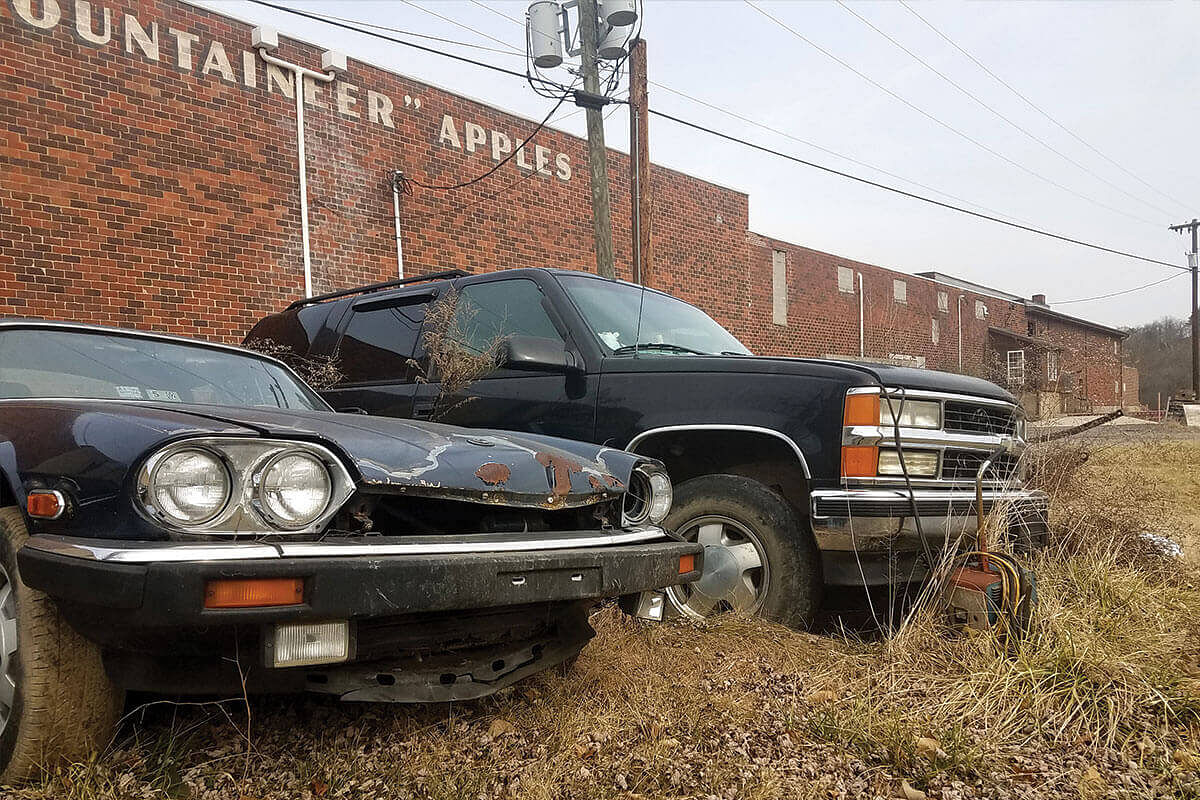
Census data also showed that between 2007 - when the recession began - and 2015, 18.1 per cent of counties saw an increase in poverty, while 2 per cent saw a decrease.
But crime rates vary from city to city, and from district to district within cities - often reflecting the reality of an America segregated by race and social and economic status.
New York, a city of eight million, is safer today. Last year, it recorded 998 shootings, a 12 per cent decline from 2015. Homicides fell to 335 from 352 in 2015.
Chicago's alarming homicide rate is overwhelmingly concentrated in just five of 22 police districts - which happen to be predominantly African American, with some percentage Latino. But that is also nothing new.
Baltimore, a city of 622,000 people, recorded the second most violent year in its history, with 216 homicides. But again, while the violence did occur in normally quiet enclaves across the city, it was "mostly in the same downtrodden neighbourhoods time and again", the Baltimore Sun newspaper reported last month.
Not surprisingly, an August 2016 Department of Justice report on the Baltimore Police found that roughly 44 per cent of its stops - to check on people - were in "two small, predominantly African-American districts that contain only 11 per cent of the city's population".
Meanwhile, New Orleans, a city of less than half a million, is "currently on pace for 230 murders in 2017. It's still early in the year, but that would be the most murders here since 2004", crime analyst Jeff Asher tweeted on on Feb 24.
Mr Rob Paral, Chicago-based consultant and urban demographics expert, said it is not as simple as Mr Trump makes it seem.
"American carnage is one particular reality, but it's complicated. These things (drugs and crime) have been going on for decades. You can always find contradictions.
"But President Trump and White House Chief Strategist Steve Bannon don't deal in contradictions. You don't organise people with contradictions, you organise people with simplicity," he told The Straits Times in an interview.
He added: "There have been a lot of killings in Chicago but the rate is still the lowest it's been in years. The neighbourhoods are safer - not to say they are safe, but the trend is good. Trump is making it sound worse than it is."
New Orleans-based crime statistics analyst Jeff Asher agrees. "President Trump's take was a simplistic one, on a very complicated issue. Just calling it 'American carnage' doesn't do justice and doesn't necessarily help us understand the situation," he told The Straits Times over the phone.
He said analysts like him who monitor the developments are concerned over the "unexplained" increase in crime in some areas over the last two years.
"But it's irresponsible not to acknowledge where the country stands right now. The national murder rate is cut in half from about 10 per 100,000 in the 1980s and 1990s, to about five per 100,000 now. That's progress. Just because we've had two bad years doesn't mean we can ignore the progress," he said.
This special report was published in The Sunday Times in two parts on February 19 and 26.

